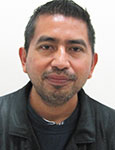Continuous Improvement and Mass Inspection
 Automating inspection in secondary assembly operations.
Automating inspection in secondary assembly operations.
One of the first lessons in quality management is the difference between quality assurance and quality control. Quality assurance focuses on eliminating defect opportunities before they occur, while quality control focuses on inspection strategies that eliminate defects before they escape the factory. There is universal agreement that quality assurance is more cost effective than quality control. Lean manufacturing principles are based on a quality assurance focus. That said, use of automated inspection equipment has been growing dramatically in recent years because increasing density and complexity in printed circuit board assemblies (PCBAs) is driving the need for a blended quality assurance/quality control approach that includes mass inspection.
Over the past 18 months, SigmaTron International's facility in Tijuana, Mexico, has been exploring the best way to automate inspection and integrate the captured data into real-time corrective action throughout its entire PCBA assembly process. A July 2022 PCD&F/CIRCUITS ASSEMBLY column, "An Industry 4.0 Approach to Employing 3-D AOI on an SMT Line," discussed the journey of integrating Industry 4.0 capabilities in a Lean Six Sigma framework in this facility's SMT area. Once that phase was completed, implementation of 3-D AOI capability began in secondary assembly work cells. Typical secondary assembly operations include soldering cables and components such as switches which can't be reflowed, adding rubber caps and placing QR labels.
Unlike the SMT area where PCBA handling, assembly and inspection operations are inline and automated, secondary assembly operations include semiautomated and manual processes plus manual handling during transit among work cells. This stage of the process introduces a higher potential for variation and associated defect opportunities, particularly in complex PCBAs. Monthly volumes are in the millions on many part numbers. The goal of utilizing 3-D AOI for mass inspection following secondary assembly wasn't to implement a long-term 100% inspection process for every product. Instead, two 3-D AOI machines have been installed in the secondary assembly area to focus on complex products with low yields. Defect data for all products built are analyzed. PCBAs showing lower yields in secondary assembly are shifted to 3-D AOI inspection to better determine defect root causes and implement corrective action. When results show desired improvement levels, new products destined for continuous improvement action are shifted to inspection.
The project implementation team included a Six Sigma Black Belt, a fixture designer/continuous improvement technician, an SPI/AOI programmer/continuous improvement technician, an AOI technician associated with quality assurance and a project administrator/trainer who is also a continuous improvement assistant.
In setting up the systems, the implementation team utilized Gage R&R (GR&R) studies for repeatability and reproducibility using the Automotive Industry Action Group's acceptability definitions. Cp and Cpk ratios were also calculated to measure the process capability against voice of the customer (VoC) standards and requirements, ensuring machine programming reflected all failure modes identified by the customer on the products under study. Once control limits were established, programming parameters were adjusted for each PCBA to assess acceptability based on IPC-A-610 and customer documentation requirements. The programming process differed from the SMT setup in the number of datasets required. Setting up the 3-D AOI program validation database for SMT required 16 datasets, while secondary assembly required 32 datasets for the initial products under study. As with the SMT area setup, there is a methodology for utilizing trends tracking in continuous improvement activities. Data are available in real-time to correct defects immediately and can also be viewed remotely for more detailed trends analysis. The 3-D AOI machines continue to learn as they analyze trends.
Two Kaizen events were held to improve initial implementation assumptions related to fixturing. Analysis of initial trending indicated that the fixturing design to facilitate inspection did not have enough support for the solder side of the PCBAs and was causing board warpage. The fixture design was modified to include additional support. Additionally, the initial fixture storage setup did not make it easy enough for operators to easily identify correct fixtures. To counter this, 5S principles were implemented that segregated fixture storage by product in custom-designed storage carts.
Since implementing mass inspection, customer report card data shows an over 50% improvement in yields on the inspected boards. Use of 3-D AOI instead of manual inspection is also reducing inspection time on complex PCBAs while improving accuracy of defect identification. SigmaTron's team is working with the customer on design for excellence (DfX) suggestions to further improve yields on PCBAs with manufacturability issues contributing to lower yields. The result is a stronger partnership with customers that focuses on improvements in quality assurance as a result of data derived from quality control activities.
is continuous improvement engineer at SigmaTron International (sigmatronintl.com) and a Six Sigma Black Belt; filemon.sagrero@sigmatronintl.com.
Press Releases
- SMTXTRA Partners with Quantum Systems to Expand Representation in Key Territories
- KYZEN Announces Exclusive Partnership with Manufacturers’ Representative Restronics Florida
- Koh Young will Showcase its Award-winning Inspection Solutions at SMTconnect with SmartRep in Hall 4A.225 on 11-13 June 2024 in Nuremberg, Germany
- Precision Automation & Assembly Appointed as New England Rep for Kubler US







